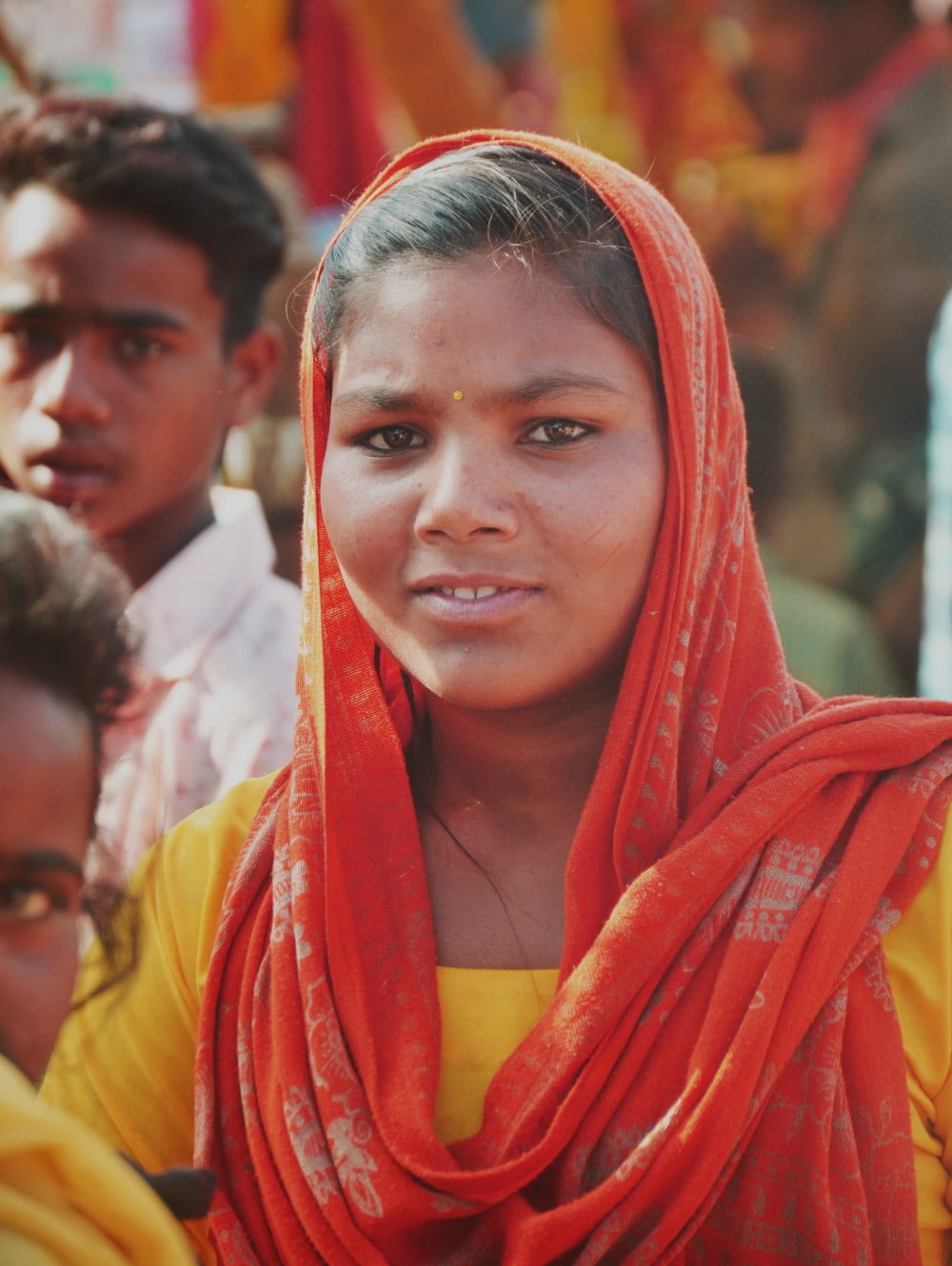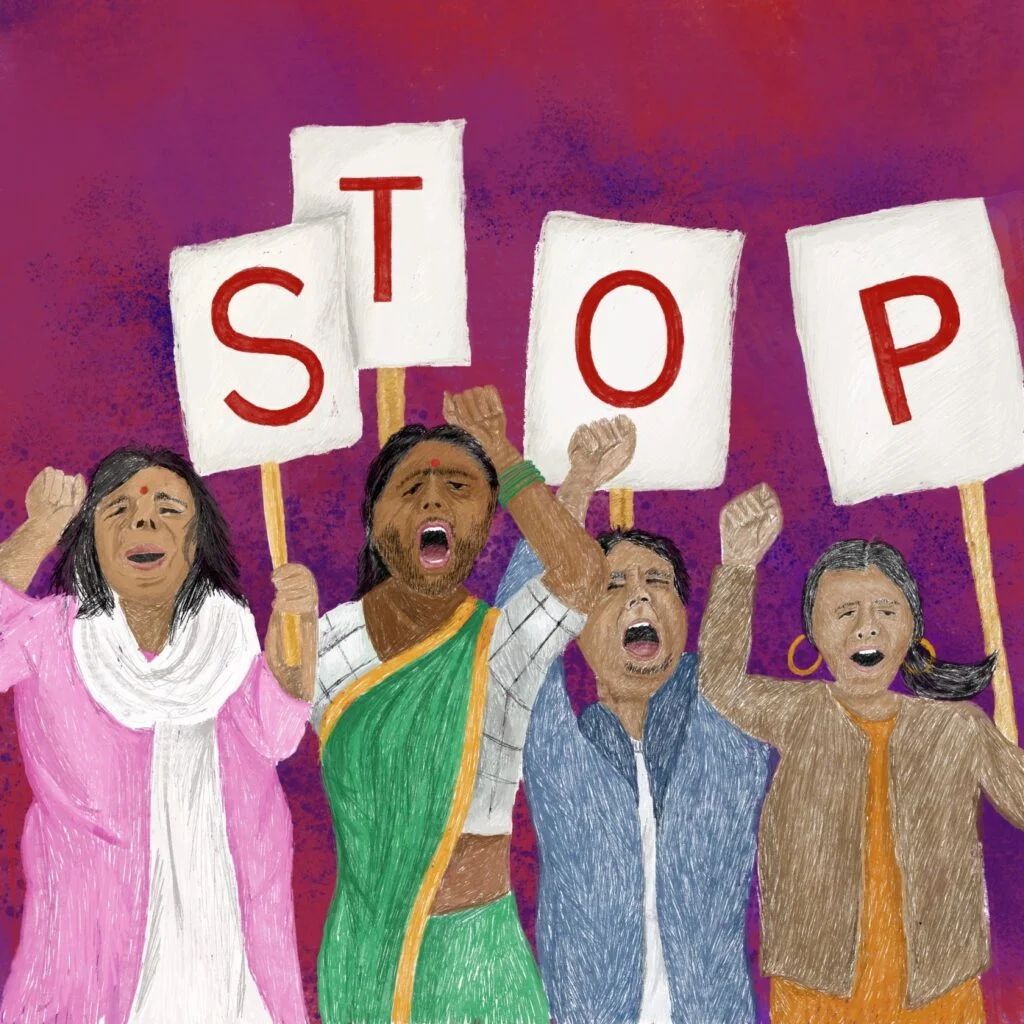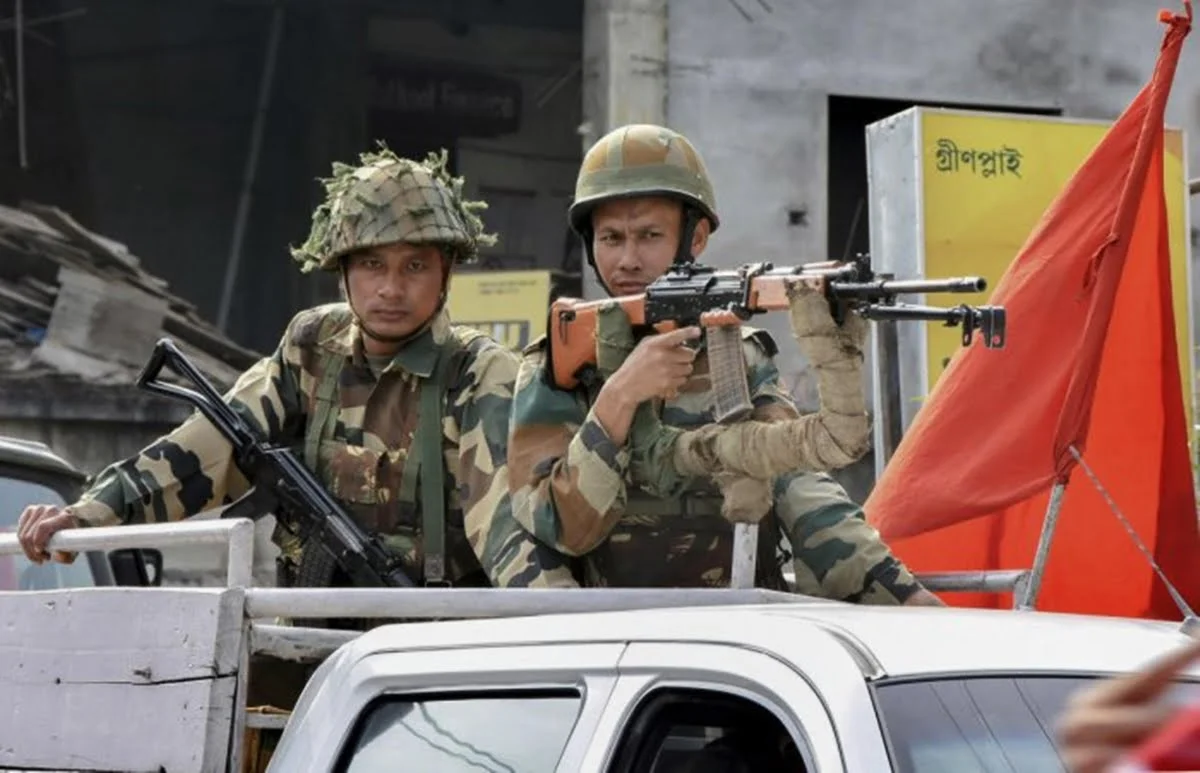Trigger Warning: Sexual violence
The women of Kaimur Hills seem destined to be first victims of the government’s development agents and later, of criminals’ exploitation. In this mountainous region of Bihar, the scattered and inconsistent policies of the government are evident in the patchy development across the more than 60 settlements. Even during pregnancy, women are forced into labour due to the lack of a robust employment structure.
Even during pregnancy, women are forced into labour due to the lack of a robust employment structure.
The situation is so dire that Rajak Singh Kharwar from Korhas village says, ‘In the absence of employment, all the forests have been wiped out. Livestock has been sold, and there is no hope for any improvement in the future.’
Renowned anthropologist Naresh Kumar Vaid clarifies, ‘Women have the most direct connection with water, forests, and land. Inconsistent development is devouring society and women’s potential, along with their right to live.‘ According to prominent journalist Alok Chamaria from Sasaram, ‘All of the government’s innovations have fallen prey to middlemen. The ruins of new development projects, the remnants of livelihood schemes meant to teach women employment skills, and the remains of watershed projects speak volumes about the cruelty of power and the system. The monstrous shadows of every era have weighed heavily on women, slowly erasing their existence from history. The question remains, amidst which brutal realities have these women lived, generation after generation?‘
The weakening grip of the brutal zamindari system
It is true that the influence of the zamindari system, which began during the British era, persisted in this region during and after the Emergency. In 1964, Rajput landlord Gaya Rai and his associates carried out the murder of nine Yadavs (Gaya Rai vs. State of Bihar, July 28, 1968/indiankanoon.org)— ‘Such countless criminal acts were symbolic of widespread violence where caste-based crimes were rampant,‘ says Badrinath Dubey of Mathurapur.

‘The prosperity brought by the Sone Canal system fuelled the obsession with weapons among the upper castes. The practice of renting out their sophisticated arms to criminal gangs across the Sone River became widespread.‘ Ranjit Sinha, one of the founding members of Tilouthu Mahila Mandal, recalls the events of the past.
‘The question of the lost dignity of Kaimur’s women, first at the hands of zamindars and later due to the coercion of criminals, remains unanswered even today,‘ says Dr. Kumari Abha, Assistant Professor in the Hindi Department at Shanti Prasad Jain College. Zamindars had no regard for human rights. Defying their will often meant mutilation, disrespect towards women, and even shooting someone was a common occurrence.
The deepening of criminal culture through resistance in Kaimur
According to experts, by 1977, the dominance of the upper castes in the plains of the district was quite strong. (Santosh Singh, 2015. Ruled or Misruled: Story and Destiny of Bihar, Bloomsbury Publishing, ISBN 978-9385436420). In the process, the dignity of women was repeatedly violated year after year. As Dr. Nand Kishore Tiwari, a former professor at Shanti Prasad Jain College, puts it, ‘Development reached Kaimur in 1962—contractors for forest resources, government employees who acted as agents of development, including health workers and researchers, all made those settlements their base.’
For these individuals, women were easily accessible since sex is not taboo in tribal areas. Though life began to change in the district after the Emergency (1977), with the rise of caste consciousness, ‘leaders from backward castes also armed economically weak and socially marginalised communities. In this process of criminalisation, women were extensively exploited because they had no other options,’ says Neeraj Kumar from Bandu village.
A long series of incidents ensued where rebels sought refuge in the Kaimur valleys after publicly killing their oppressors with armed caste gangs.
This led to the beginning of uprisings against the upper castes. A long series of incidents ensued where rebels sought refuge in the Kaimur valleys after publicly killing their oppressors with armed caste gangs. Now, ‘Neither the government nor the district’s intellectuals ever tried to understand how much suffering these women endured at the hands of those taking refuge,‘ says Sardar Singh Kharwar from Kuba village.
The era of social rebellion
When the plains of Rohtas became a battlefield of crime and Kaimur turned into a refuge for criminals, women were the first to be targeted. The terror of bloodthirsty dacoit gangs, who were social rebels seeking refuge in Kaimur after killing countless upper-caste individuals, escalated, earning this region the reputation of a Mini Chambal. However, before 1990, successful police efforts led to the elimination of these dacoits. This process brought to light the sordid realities of the personal lives of these social rebels, revealing a long list of women who were kept as their mistresses.

After this, the Maoists began their movements. In a short time, they established their dominance over Kaimur, leading to the complete breakdown of law and order. The Red Rebellions’ dominance continued unchallenged until 2010. Thus, from the dawn of independence until nearly 65 years later, local life was effectively held hostage by feudal oppression, dacoits, and later Maoists.
The period that followed has been marked by the ongoing struggle for forest rights. The critical question remains: amidst the widespread terror imposed by landlords, development agents, dacoits, and Naxalites, as well as the pervasive fear instilled by the Forest Department, what hardships did women endure?
The perpetual cycle of exploitation amid thriving industries in Kaimur
The tribal communities sustained themselves through forest produce, fishing, hunting, animal husbandry, and agriculture for a long time. However, this era was marked by extreme poverty, various compromises, and a dependence on exploitation for survival, involving moneylenders, forest guards, and police, as well as contractors, residential school teachers, and healthcare workers. The fate of having to endure exploitation to fill one’s stomach was, in those days, considered a symbol of social status, as it was known that a particular woman had connections with a prominent contractor or moneylender.
Land of lust and libido
The dacoit gangs were nomadic. It is said that ‘local tribal girls were forcibly recruited into these gangs and became their mistresses.’ Names like Kisnu from Chandodih, Rekha from Jamradag, and Parvati from Lauri are among those who were taken from their homes by these so-called ‘social rebels,’ recalls Ramswarth Singh from Lauri village. Unfortunately, ‘whenever a gang stayed overnight in a village, local girls were forced to fulfill the sexual demands of the dacoits,‘ says Rajpati Oraon from Jonha village.

He remembers those days vividly, ‘When girls went to work in the fields, collect wood from the forests, or fetch water, if they disappeared for even a week, it was usually assumed that the gang had taken them.’ Out of these girls, 9 out of 10 were barely 15 years old and unmarried. Sadhu Singh from Rehal explains, ‘Girls associated with the dacoits were brutally tortured by the police,‘ and those who became pregnant due to illicit relations with the Naxalites were simply ignored.
Kaimur became a mafia den
In 1996, when the plateau was declared a wildlife sanctuary, the Forest Department began to restrict access and banned the collection of minor forest products (MFPs). Although tribal communities have primary rights over forest products and water, women face daily disputes and conflicts over these resources.
Tasks such as collecting water, gathering wood, and harvesting forest products are predominantly carried out by women.
Tasks such as collecting water, gathering wood, and harvesting forest products are predominantly carried out by women. The farther these tasks take them from their villages—whether into the forests or towards remote water sources—the more their hardships increase (Singh, R.S.-1986/Challenges Occupational Structure of Scheduled Tribe, Van India Publication, New York).
Use of modern weapons and lack of education
Meanwhile, the Naxalites began to significantly interfere with the region’s social structure and tribal traditions. Notably, there are a dozen tribal residential schools in Kaimur, but they admit only boys, not girls. While the Naxalites claimed to fight for justice, their activities had a profound impact on the identity of local tribals, forest-dependent communities, and Dalits. Their cadres included young girls who, due to the absence of any educational framework for them, were trained in modern weaponry and guerrilla warfare techniques at various camps.
As the world was engrossed in debates about globalisation and open market policies, these 14 to 15-year-old girls recruited into the cadre were coerced into undergoing abortions.
The phase of mental trauma
‘The mental stress of the daughters of Kaimur, plagued by crime, reached its peak. Continuous rape, forced abortions, and sexual exchanges with dacoit gangs and cadres, involving women aged 15 to 40, were driving them towards mental breakdown,’ explains Badri Nath Dubey. ‘Constant sexual violence, gang rapes, multiple forced abortions each year, and relentless abuse at the hands of the police reveal a shameful aspect of the internal system,‘ Badri Nath concludes.

Forest guards did not hesitate to rape them in the forests and sometimes would suddenly invade their homes to steal chickens, eggs, goats, and cash. There is no one to listen to these 125,000 women.
A new form of state-sponsored brutality in Kaimur
‘For the past two decades, there has been a demand to declare the local tribal area as a Scheduled Area and effectively implement the Panchayats (Extension to Scheduled Areas) Act, 1996,‘ reports Chandra Deep Oraon from Jonha village. The local tribal communities support administrative reorganisation of the Kaimur Valley, repeal of the 1927 Indian Forest Act, and implementation of the Chotanagpur Tenancy Act to protect their identity.
In March 2023, Rajkali Oraon from Nagtauli was brutally gang-raped and murdered by a forest department constable while collecting wood. The case did not reach trial, but forest department personnel and forest guards continue to violate the dignity of women.
A new scheme of oppression in Kaimur
There is strong opposition against the proposed Kaimur Wildlife Sanctuary and Tiger Reserve. Tribals, who have been exploited by landlords, social rebels, and so-called champions of social justice, are now joining the Kaimur Liberation Front and initiating their first organised movement. Is Kaimur once again falling into the grip of Naxalism over issues of rights and entitlements? Is this, once again, a grand deception?
The question of rights comes later; their very existence is at stake.
Throughout history, women in this region have faced oppression under every established system. Venturing out for labour often means facing exploitation. Gathering forest produce or mahua flowers in the woods leads to the violation of their dignity. Fetching water might expose them to the sexual predation of predators. The question of rights comes later; their very existence is at stake.
About the author(s)
Amarendra Kishore is an independent journalist residing in Delhi, whose work delves into the heart of public affairs. Through his narratives, he offers an exploration of social and gender dynamics, the rich yet challenging tapestry of rural life, and the stark realities of poverty. His journalism sheds light on the adversities faced by indigenous communities and eloquently advocates for the urgent need to reconnect natural resources with local lives.





